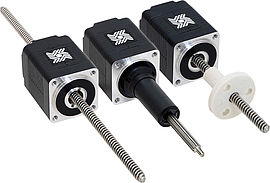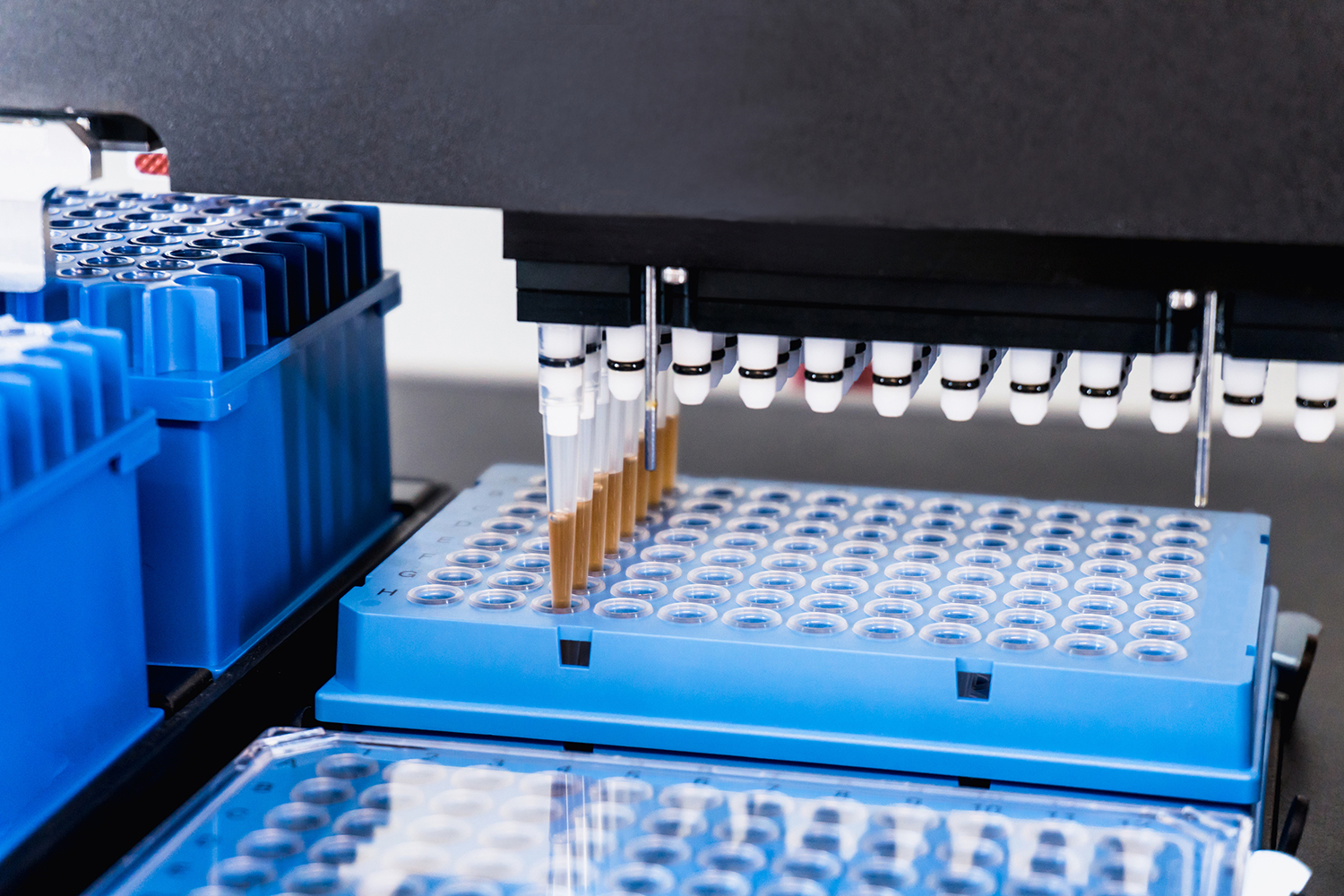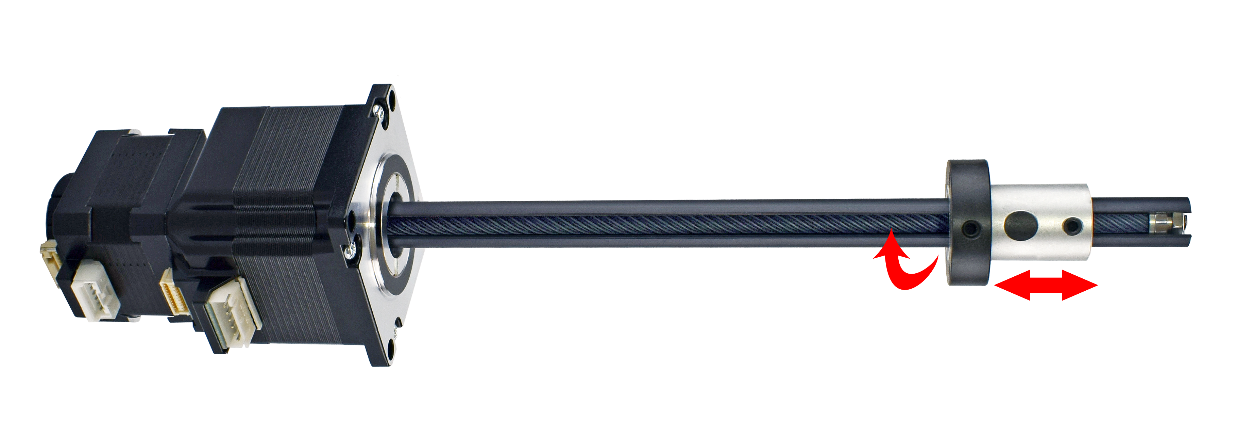Design Type: Z-Theta Actuator
The Z-Theta actuator provides linear and rotary point-to-point motion in a compact package.
At the center of the Z-Theta Actuator is the patented ScrewRail™, which combines both guidance and linear motion in a slim coaxial profile. Haydon Kerk's innovative dual-motion integration with a pair of stepper motors adds rotational motion (theta) that reduces the size of the actuator system by 50-80% compared to alternative approaches, at a lower budget than the equivalent components purchased separately.
The highly configurable Z-Theta Actuator offers flexibility, economy, consistency and performance suitable for a wide range of applications in laboratory automation, semiconductor and industrial automation. Performance can be customized with a variety of spindle resolutions, a choice of free-wheeling and backlash-free spindle nuts, stepper motor configuration options, and optical encoders.
Key Features:
- Compact coaxial design allows small footprint
- Easy integration into the system
- Pre-engineered, modular design reduces supply chain and time to market
- Configuration options optimize performance for specific applications
- Compatible with a wide range of drives and controls
The Z-Theta actuator is a product designed to address the ever-increasing performance requirements of rotary and linear motion in lab automation. The Z-Theta actuator has been designed with a combination of development work, manufacturing expertise and a keen eye for what is critical in rotary and linear motion. The linear actuator based on the ScrewRail® is complemented by the new approach of directly integrating a rotary motor to drive the theta motion. This design is coupled with a second motor to control the linear motion of the carriage via a lead screw. Optional encoders are available for both the linear and rotary axes, providing either position confirmation or full step-servo control of the device. The result is a highly compact system solution for medium to high precision applications where both rotary and linear motion are required.



